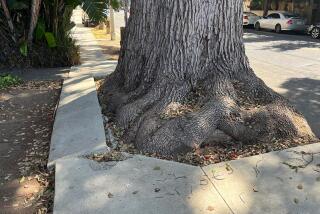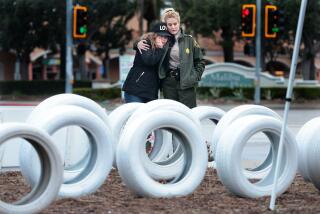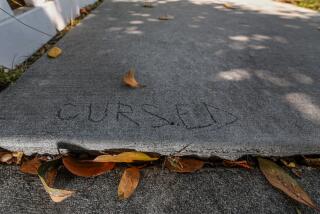Tow Trucks Will Patrol the Freeways : Transportation: Bradley proposes $8-million plan to reduce traffic problems. One official says flow will be improved by 10% to 15% overall.
- Share via
The bane of freeway commuters--traffic slowdowns caused by disabled vehicles--may become less troublesome on Los Angeles freeways starting in July, when city and county officials expect to implement a tow-truck patrol.
Mayor Tom Bradley, on the offensive against traffic congestion for the second day in a row, announced Thursday an $8-million proposal to reduce freeway delays by using 40 tow and service trucks on 160 miles of county freeways during morning and evening rush hours.
Bradley said he will formally present the proposal to the Los Angeles County Transportation Commission, which will administer the program, on Dec. 6. The funds would come from Proposition C, approved by voters earlier this month.
Bradley said the program can be implemented as soon as the commission gives its expected approval and the monies become available July 1.
“Fifty percent of the delays on the freeways of this county are caused by automobile accidents or breakdowns,” Bradley said during a press conference on a downtown bridge overlooking the Hollywood Freeway. “We believe that by adding a massive force of 40 service and tow trucks, we can greatly reduce the congestion and help make life easier for those who use our freeways.”
Neil Peterson, executive director of the transportation commission, said the effort will pay off for county motorists, who lose 450,000 hours a day in freeway delays. He predicted that the tow trucks will cut the time it takes to remove a disabled vehicle from the current average of 24 minutes to 10 minutes. That will speed traffic flow by 10% to 15% overall.
“That reduction in congestion not only will make it easier and quicker to travel,” Peterson said, “but also save our economy a great deal of money. . . . It will save the region about $400,000 a day” in employees’ work time wasted by sitting in stalled traffic.
The California Highway Patrol has operated a tow-truck patrol on a six-mile stretch of the Santa Monica Freeway for two years.
California Highway Patrol Sgt. Karen Clark, who coordinates the project, said it has increased traffic speed by 5 to 10 m.p.h. In addition, accidents have decreased about 15%, which she said was because of a lessening of the “domino effect” caused by vehicle breakdowns.
Bradley’s proposal calls for service patrol trucks that will be equipped to make simple repairs and tow trucks to remove vehicles that cannot be easily fixed. They will operate from 6 to 10 a.m. and 3 to 7 p.m. Monday through Friday and will patrol the most congested stretches of the Santa Monica, Foothill, Long Beach, Hollywood and San Diego freeways, said Robert D. Cashin, an area director for the transportation commission.
The service will be free except for drivers of three-axle trucks weighing 26,000 pounds or more.
Motorists and other traffic experts seemed to welcome the idea.
“I think it would help,” said Seyoum Gebray, who drives the Santa Monica and Harbor freeways every day from his Crenshaw-area home to the downtown parking lot he manages. “If some car breaks down on the freeway, in two minutes you see cars lined up for miles. It makes me depressed.”
UCLA professor and transportation specialist Martin Wachs called the proposal “an extremely useful thing to do” that will reduce traffic backups. He said this program, along with 20 other strategies Bradley unveiled Wednesday, will prove to be a more cost-effective approach to traffic control than building Metro Rail.
The mayor on Wednesday unveiled an ambitious 20-point package of traffic control strategies that included prohibiting valet parking services from parking cars on residential streets and “speed humps” to encourage motorists to observe speed limits.
His earlier initiatives, most of which were adopted by the City Council in 1987, included tougher parking regulations, fines for motorists who blocked intersections, more traffic control officers and a ban on 70% of truck traffic on city streets during peak hours.
More to Read
Sign up for Essential California
The most important California stories and recommendations in your inbox every morning.
You may occasionally receive promotional content from the Los Angeles Times.











